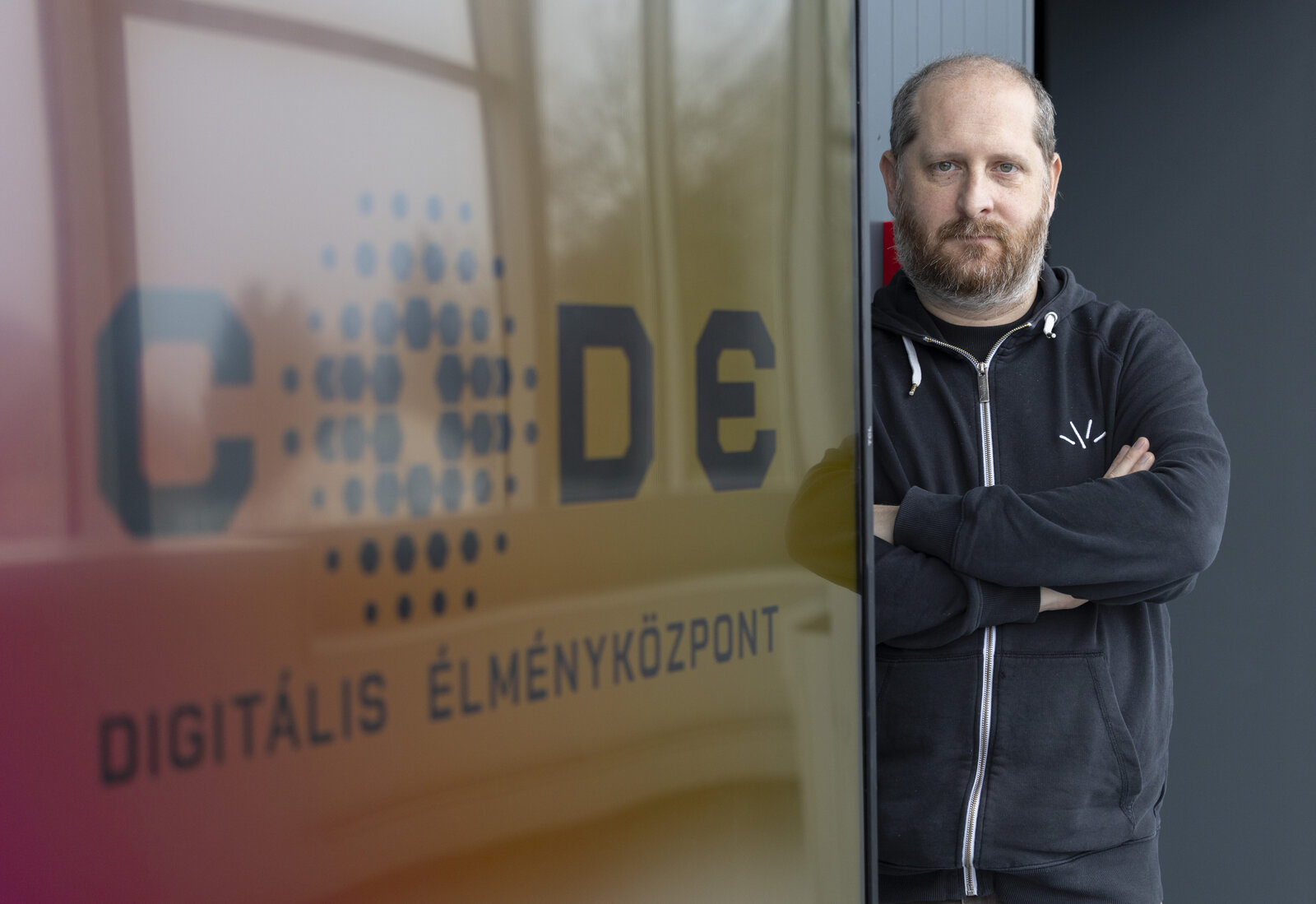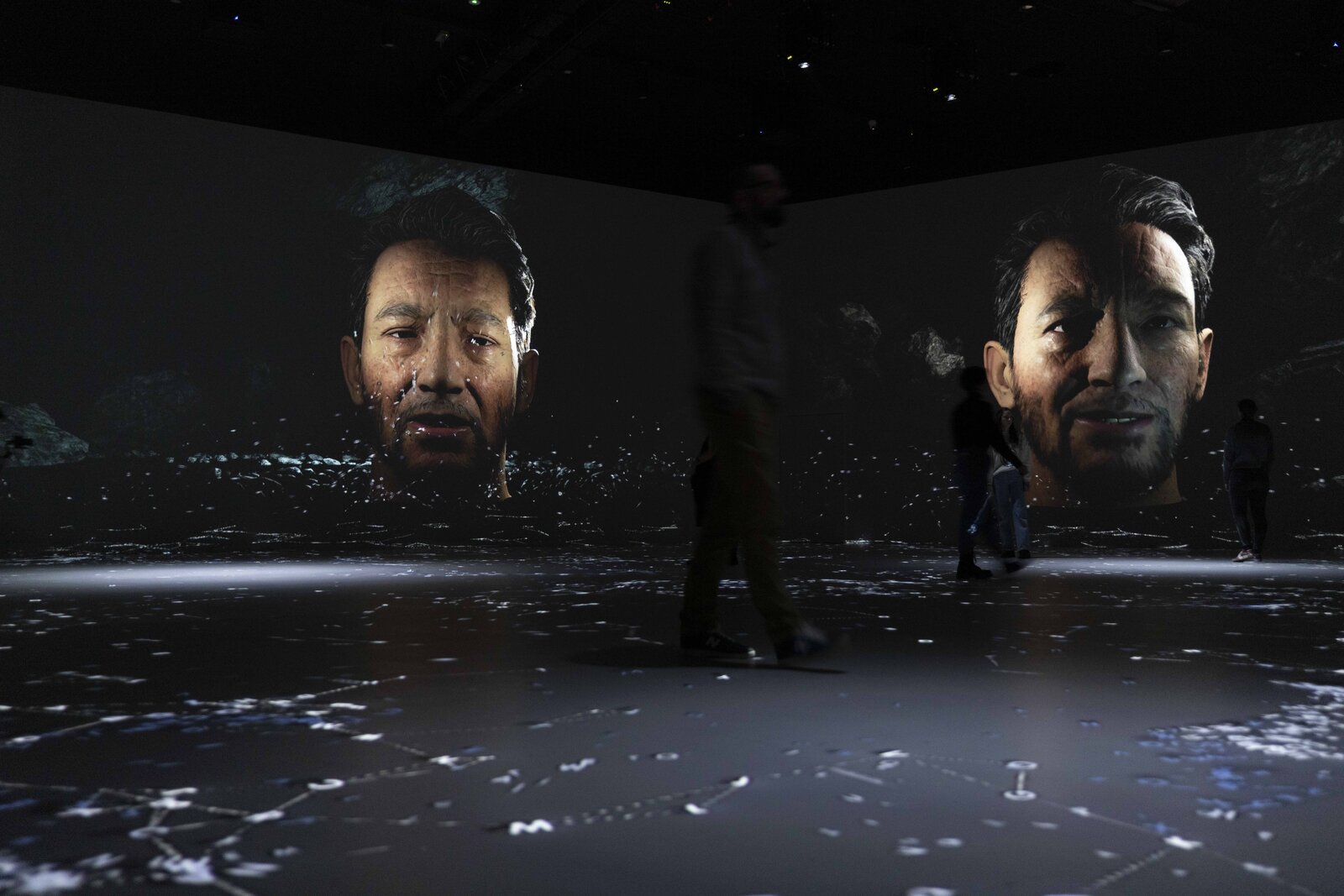"CODE Has All the Qualities to Be a Vibrant, Energetic, and Lively Community Space." – Interview with Tamás Zádor
From the very beginning, Tamás Zádor, the leader of the Glowing Bulbs collective, has played a key role in building the technological foundation of CODE and developing its opening content. As a visual artist working with digital creations, he sees immense potential in CODE - not only as an entertainment venue but also as an important educational platform. Among other things, we talked about this, digital art and its rise.

Let's start from a broader perspective. What does it take to become a digital artist?
There are different paths. One way is that someone sits down at home, starts creating something, and it eventually develops from there. The other way is that a person is genuinely interested in the field, starts researching, learns on their own or attends a course. When we talk about digital art, we are talking about many things at once. There is the technical and technological aspect, and then there is art as a form of expression. Digital art is no different from painting, for example; one can learn it in a self-taught manner. However, just as in painting, where technical proficiency alone does not make a piece engaging, the same applies to digital art. A person might develop outstanding technical skills, either self-taught or in a course, but their content or message may be unremarkable. And this will eventually become evident. Within the profession, opinions vary greatly on what constitutes art. I take a more inclusive view: I believe that anything that is good and offers something to the audience can be considered art.
So, was this the birth of Glowing Bulbs?
Yes. In the end, we reached – and continue to reach – everywhere, from opera and theatre to dance performances and corporate events. What’s perhaps interesting is that we have always worked as a team. The number of people working with us at any given time depends on the project. We have a core team, but we also collaborate with external professionals, including animators, musicians, dancers, directors and filmmakers.
What inspires you when you work?
We primarily draw inspiration from space itself - we work with spaces and always try to incorporate some kind of narrative. I see our work as a form of storytelling. The CODE project features quite an explicit storytelling approach, but in general, our inspiration comes from literary works, music or performances. This is a defining feature of this particular audiovisual art form: music and imagery inevitably influence one another.
We tend to prefer figurative elements and enjoy working with photography, but what makes it exciting is that it’s always different. One day, we might be working on a spoken-word event with slam poets; the next day, it’s an opera performance. Another day, it could be literature, and on another, a visual artist might ask us to create a response to their work.

Speaking of CODE, where you have been working for the past few months: how do you see the role of this institution within the field? How does it fit into the scene as a venue in Veszprém?
It’s a complex issue. Let me start at the beginning: I think it’s fantastic that CODE exists - it fills a gap, and I’m particularly pleased that it isn’t in Budapest. We are a little over an hour away from the capital, very easy to get to, and Veszprém is a great place - I’ve grown really fond of it during the ECoC programme. This is just my personal perspective, but regardless, I believe it’s important that not everything should be centralised in Budapest.
Being outside of the capital means it doesn’t get lost in all the noise - it receives much more focused attention and doesn’t require as much hype to stand out, unlike in Budapest, where everything is loud and overwhelming.
One of the reasons we joined the CODE project is that we believe it plays a crucial role. There’s an incredible buzz internationally in this scene, but at the same time, it’s easy to get lost in technological kitsch: it’s an alluring trap because it instantly captivates audiences. However, it’s vital that real cultural and artistic values emerge from this space for it to function as an institution.
Education also plays a key role in this. CODE has enormous potential, not just as a place where people come for entertainment, sitting back and watching stars and abstract forms swirl around them, but as a space where learning also takes place in some form.
CODE has all the qualities to become a vibrant, energetic and dynamic community hub.
How does the opening content relate to this spirit?
It is a very strong statement that CODE starts with content created by living contemporary artists from Hungary, specifically envisioned for this space, the Hexagon. I believe this step demonstrates great courage on CODE's part, but I think it will pay off, because it is a kick-off which sets the tone and shows the direction and purpose of the whole initiative. I believe that the Studio, the Hexagon and the installation space below collectively create a superbly prepared, technologically accommodating venue that, of course, will require a lot of work to fill it with life, but I think there is a demand for it, and there will be. There is so much to learn from each other, from international guest artists, local guest artists, creators, universities, children, adults and students who will enter CODE.
The title of CODE's opening content is BABEL and is inspired by Jorge Luis Borges' short story The Library of Babel, which is about an imaginary library containing all knowledge, feelings and yet-to-be answered questions. How should one envision the process of creating these contents?
The creation was definitely influenced by the fact that this is a special, hexagonal space. There are many immersive spaces, most of which are typically massive, block-like structures, often boxy in shape, which may or may not have divisions. In many cases, works, especially travelling exhibitions, are created with the idea of making a wallpaper out of them, which can then be repurposed with minimal investment and limited or less effort, and it moves from institution to institution in this way. BABEL is dedicated to this geometry, this size, this space, and if it needs to be transferred to another space, it must be regenerated; at some level, the creative processes need to be redone, as the content itself originates from a hexagon. This is a very special constellation of six artists, six sides, and a hexagon. It's an interesting creative process regarding how this Babel theme came about. At the very beginning, we agreed that the six creators would loosely connect to it, so we looked for something to unify the whole concept, and then ideas began to pour in.
In what ways do you think CODE can support creators?
I think CODE is very inspiring because it's an inclusive space that is unique not only in the region, but also in Hungary. There is a creative studio all ready and prepared, waiting for creators, where they can work together in an amazing quality, with space and opportunities for collaboration, as well as the chance to showcase their works. The scale and the technology available here for creators are not at all self-evident. When designing CODE, we were very mindful of incorporating technologies and tools that, relative to material possibilities, are as up-to-date and timeless as possible. This is very challenging in this field, as in just a few days, the graphics card may become outdated, the sensors may become obsolete, and the projector may no longer be advanced technology. However, we tried to use technologies here that extend this possibility as long as possible. The quality of the image and sound here is part of a system that is not available anywhere else in Hungary. It is an honour for us to work here, and I believe it will be an honour for others as well.